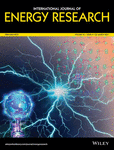Performance evaluation of a high concentrator photovoltaic integrating a Fresnel lens in Saudi Arabia: A case study
Summary
Saudi Arabia has plentiful freely accessible solar energy with daily total Direct Normal Irradiance on the higher side. Furthermore, because of its extensive desert land with over 2 million km2 expanse and high clearance index, the country could be a successful contender for accommodating the High Concentrator Photovoltaic (HCPV) technology. This technology, which assimilates Fresnel lens, has drawn more attention particularly after presenting III-V Multi-Junction solar cells for terrestrial uses since they keep achieving new conversion efficiency accomplishments. This article evaluates the HCPV performance in Saudi Arabia using direct normal irradiance data gathered in recent times. To undertake this assessment, a validated developed optical simulation using a ray-tracing technique is employed to evaluate the maximum and average power output that may be gathered using a single HCPV unit in the primary regions and cities in the nation. Results indicate that the highest values for average and maximum annual power yield belong to the Western Inland area with one HCPV unit having a Fresnel lens with a 0.25×0.25 m2 aperture area, and those values are over 36 and 59 kWh, respectively. Concerning cities, Tabuk has HCPV unit producing the highest average annual yield greater than 39 kWh while the maximum annual yield crosses 60 kWh. Hence, the yearly electrical energy yield of 194 such units that use an area less than 12.2 m2 corresponds to approximately 33% of the electricity demanded yearly by a typical home in Saudi Arabia, which includes heavy energy-consuming devices like air conditioners. Additionally, the estimated pollution potentially displaced by these units as per the global warming potential indicator is around eight tons of CO2 annually.




